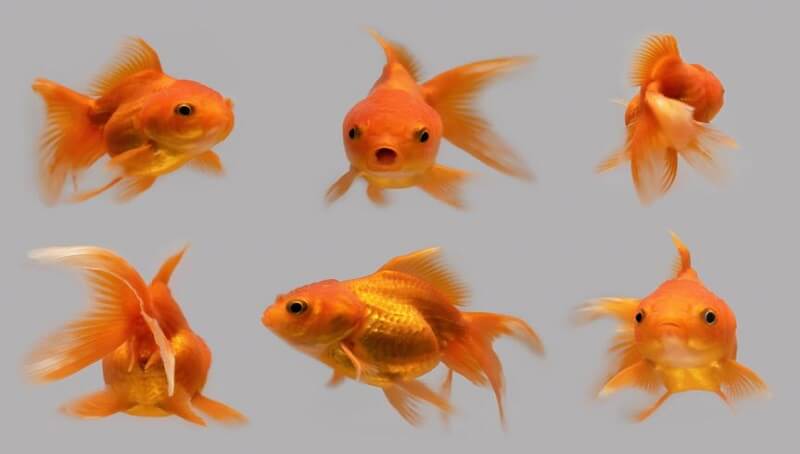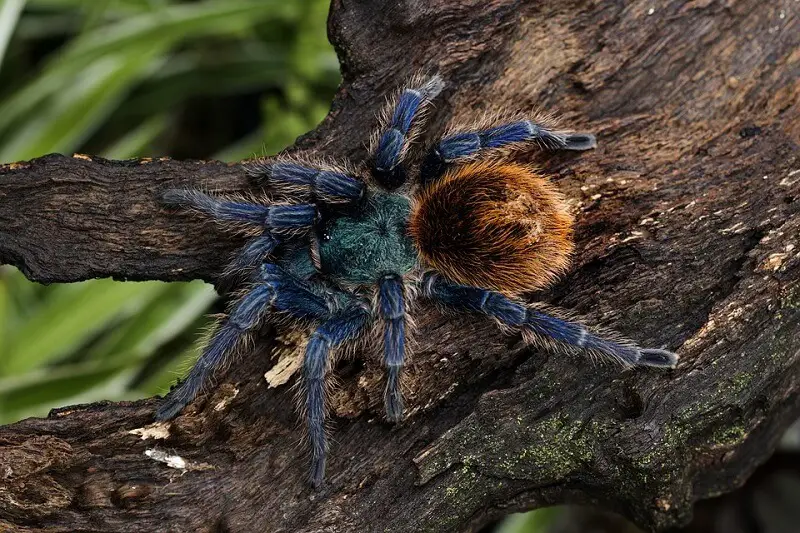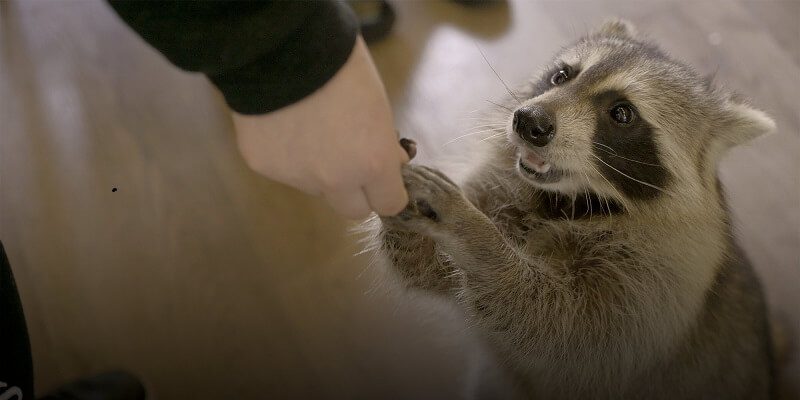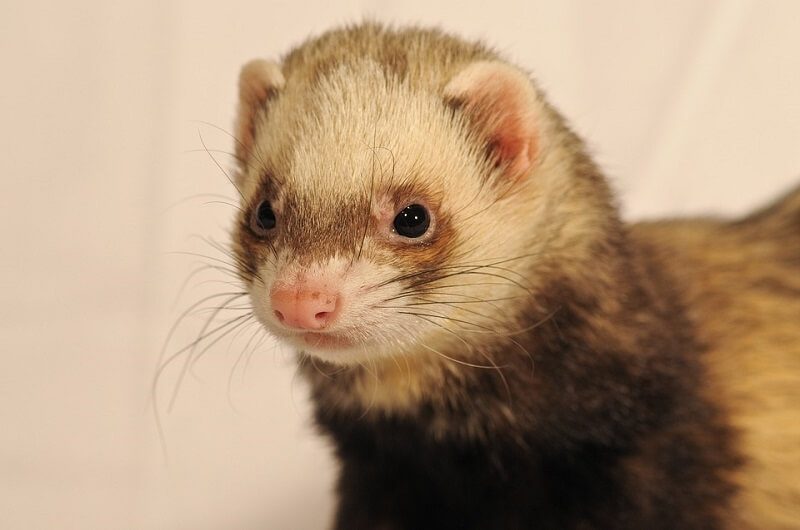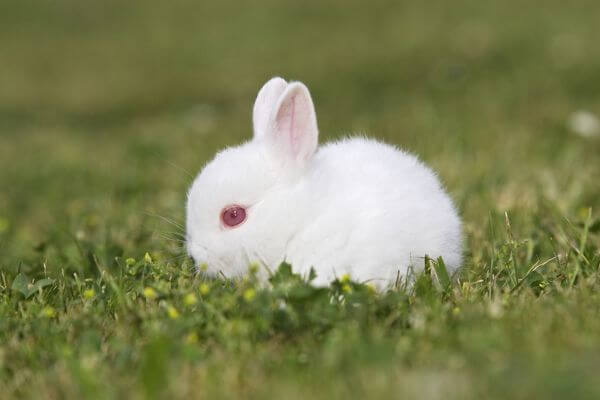Despite popular belief, the goldfish, Carassius auratus, are not pets that require little care or should be kept as “test” pets. They need and deserve as much care as any other pet. Goldfish are resistant species and tolerate beginners’ mistakes well, but you will need to make a little effort to ensure their health and survival. They should never be kept in a bowl of fish, but require an aquarium with proper ventilation and water filtration.
Varieties of the goldfish
There are several different varieties of goldfish. They are usually divided into standard varieties with a long body, and fancy with a round body.
The Comet Carassius auratus is the most common species of companion fish. Although they are often sold in pet stores when they are very small, they can grow up to 30-35 cm long, requiring an aquarium of up to 350 cm when they reach their adult size. The Shubunkin and Sarasa goldfish have the same body type but are more colorful fish with combinations of red, white, black, and yellow.
The varieties of goldfish are numerous and have many anatomical adaptations. These varieties include Oranda, Ranchu, Telescope, Fan Tail, Celestial, Moor, and others. They have egg-shaped or rounded bodies. Given the structure of their bodies, they usually do not grow as large as long-body goldfish and may have some structural problems.
These fish are more prone to buoyancy problems, spinal diseases, and traumatic injuries due to protruding eyes and delicate fins. The Oranda goldfish has a fleshy growth on the head, called wen, which may even require cutting it off if it grows over the eyes or face of the fish.
The most common varieties of pet goldfish include:
- Common Goldfish is the closest relative of the common carp;
- Comet Goldfish is similar to the common goldfish, but smaller and thinner, with a long tail;
- Shubunkin Goldfish or Calico Goldfish is similar to the common goldfish but more colorful;
- Black Moor Goldfish is distinguished by an intense black color and telescopic eye coming out;
- Oranda and Redcap Oranda Goldfish is one of the most popular varieties. It has a red growth that becomes visible in 3-4 months.
- Lionhead Goldfish is the best known without a dorsal swimmer, as well as one of the roundest types of goldfish. It has a growth similar to a raspberry fruit that can cover its face;
- Ranchu Goldfish is similar to Lionhead Goldfish, with the difference that the contour of the body toward the tail is more curved.
- Bubble Eye Goldfish without a dorsal swimmer, has two bumps under the eyes, two bags of water that can prevent the fish from swimming;
- Telescope or Demakin Goldfish has eyes positioned at the end of extensions, located on both sides of the head;
- Veiltail Goldfish has a long double tail, similar to a wedding veil;
- The Fantail Goldfish has two upper and lower caudal fins, the upper fins are fused along the tip;
- Pearlscale Goldfish have a spherical shape, and the fins are similar to those of the fantail goldfish;
- Ryukin Goldfish’s distinctive sign is a hump.
Environmental requirements
You might also like my articles about:
No matter what kind of goldfish you keep, maintaining a suitable aquatic environment is essential. You will need at least 40 liters of water per fish. Goldfish can live up to 20 years, and some have lived over 40 years. Fancy species usually survive until the middle of adolescence.
Most goldfish are tolerant of beginners’ water quality mistakes. They are very resistant species and can tolerate moderate levels of ammonia, nitrites, and nitrates. Once the nitrogen cycle in the aquarium has been established, it is recommended to keep nitrate at less than 20 mg/L, and ammonia and nitrite at zero. In crowded aquariums, this can be difficult to maintain without frequent water changes.
Goldfish are known for eating constantly and creating a lot of waste, hence the need for greater space. They can also tolerate a wide pH range of water, provided the alkalinity is high enough to stabilize pH levels.
They like to search for food, and they will dig and dig into the substrate of their aquarium or pond looking for food.
Keeping the goldfish outside
In addition to the indoor aquarium, the golden carriages can also be kept in outdoor ponds. They resist temperature changes over the seasons. Provided that your pond is large enough and properly constructed, the goldfish might enjoy spending all their time outdoors or, in a colder climate, sharing their time between the outside and the inside.
Outdoor ponds should have at least 120 l of water per fish and should have a ventilation and filtration system. The water depth should be at least 0.90 to 1.20 m, deeper in colder climates.
It is not recommended to keep pet goldfish in large outdoor ponds. They do not have a good configuration to swim over long distances, and the increased depth can exert additional pressure on their native bladder, increasing buoyancy disorders. Because of their weaker swimming ability, they cannot compete with comet shells or Koi fish for food and are more prone to predator attacks.
Feeding the goldfish – How much and how often do they need to be fed?
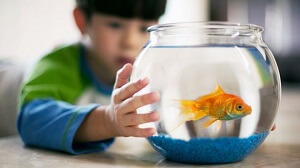 Caring for the goldfish also involves concerns about feeding it. Goldfish are often compared to Golden Retrievers in terms of appetite. They like to eat and, depending on the temperature of their water, they can seem almost unhealthy. No matter what species of goldfish you keep, because they are ectothermic, the warmer the water, the hungrier the fish will be. Below 21 degrees Celsius, you should feed your goldfish once a day. From 21 degrees Celsius and above, you should feed your goldfish twice a day. Give the fish how much food they are able to eat in 3-5 minutes.
Caring for the goldfish also involves concerns about feeding it. Goldfish are often compared to Golden Retrievers in terms of appetite. They like to eat and, depending on the temperature of their water, they can seem almost unhealthy. No matter what species of goldfish you keep, because they are ectothermic, the warmer the water, the hungrier the fish will be. Below 21 degrees Celsius, you should feed your goldfish once a day. From 21 degrees Celsius and above, you should feed your goldfish twice a day. Give the fish how much food they are able to eat in 3-5 minutes.
Choose a diet with 30-35% protein and 5-7% fat. For fish or offspring that are reproductively active, you will need to choose a diet that is higher in protein and fat. There are many commercial diets available for goldfish.
Buoyancy disorders can be related to diet. Being voracious surface eaters, goldfish can swallow too much air during feeding. Feeding the fish with a submerged type of food is recommended to help any fish prone to buoyancy disorders so that they do not swallow air to the surface while eating floating food. This will correct buoyancy disorder without veterinary intervention.
Maintenance requirements
Although they are tolerant of beginner mistakes, the aquariums and ponds of the goldfish require regular maintenance. You will need to clean the filters correctly weekly, but do not replace them all at once, as you can lose the necessary bacteria that break down the residues. Use a sand/gravel siphon at least once a week to remove debris from the substrate and fill the aquarium with fresh water.
It is highly recommended to purchase a water quality test kit to maintain good water chemistry. Closely follow the water quality from the goldfish aquarium.
Myths about the goldfish
From the many myths surrounding it, I will try in this article to break down the most common ones, which directly influence the quality of life of the goldfish, in the hope that there will be fewer and fewer unhappy goldfish.
1. The goldfish can be held in the bowl
For years, the goldfish has been promoted as the perfect fish for the bowl, and all its appearances in the media are in this form. In reality, the glass bowl is a life-long prison for the lovable fish, a safe and slow death sentence. In such a small space, there is no aeration, filtration, the volume of water in which to dilute toxic compounds, and bacteria and ammonia quickly dominate the entire aquatic environment, making it impossible to survive. For a fish of the size and character of the goldfish, a spacious aquarium of at least a few dozen liters is the ideal home.
2. The goldfish only grows as much as the size of the aquarium
There is some truth in this statement, but not as it sounds, and it has more to do with the quality of the water than the size of the aquarium. Under normal living conditions, in a healthy aquatic environment, the goldfish grows continuously, until death. In a small aquarium, the water parameters deteriorate rapidly and the quality of life decreases. Stopping the growth of the fish is a negative sign of disease and suffering. Because of this, many fish deform and die at an early age.
3. The goldfish has a memory of 3 seconds
It is often said that the goldfish can be kept in the bowl because it has a short memory, and until it gets to the other end of the vessel it has already forgotten what it has seen, and on its return, everything will seem new. This myth was probably born as a justification for the maintenance of the bowl. In reality, goldfish have a very good memory, which lasts up to 5 months. They can perceive the passage of time and devote themselves to a routine, for example, anticipating when they will be fed in the morning. Some species can be trained.
4. The goldfish produces more dirt than any other fish
By referring to the amount of poop per body mass, the goldfish do not produce more dirt than other aquarium fish. A large fish normally produces more residues than a smaller one. The amount of residues are in close correlation with the quality of the food the fish receives.
5. The goldfish lives a little
In fact, the goldfish is one of the longest-lived aquarium fish. In an optimal aquatic environment, goldfish live an average of 20 years. The record for longevity of an aquarium goldfish was 49 years. The fact that many goldfish die quickly is the consequence of the poor living conditions in which they are kept and not the life expectancy of this species.
6. The goldfish and the Koi fish are the same species
Although they are closely related and can even hybridize, they are not the same species. Koi fish, Cyprinus carpio, is an intensely selected variety of common carp, while goldfish are domesticated descendants of the crucian carp, Carassius carassius. Both belong to the same Cyprinidae family.
7. The goldfish needs cold water
In fact, the goldfish can live just as well in cold water as in hot water, from just over 0o to almost 40o Celsius, which is confirmed by their spread in natural habitats around the world. However, because warm water retains less oxygen, it is recommended to keep the fish in the water at room temperature.
8. The goldfish cannot be held with other fish
The goldfish is not anti-social and aggressive, nor does it produce toxins that kill other tropical fish. The goldfish can be held together with other species as long as they share the same water parameters.
In conclusion, the goldfish is an excellent aquarium fish: energetic, durable, long-lasting, with a vast history behind it. The above myths should no longer be promulgated, as they work against the well-being of the goldfish.
